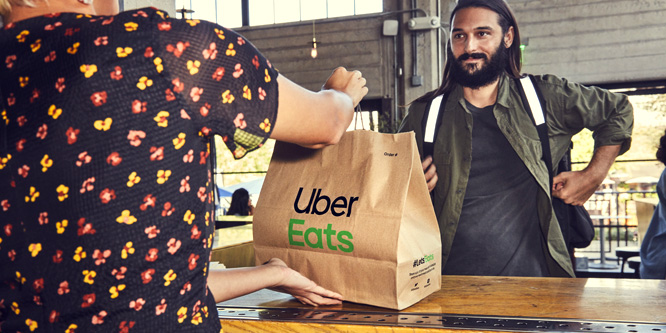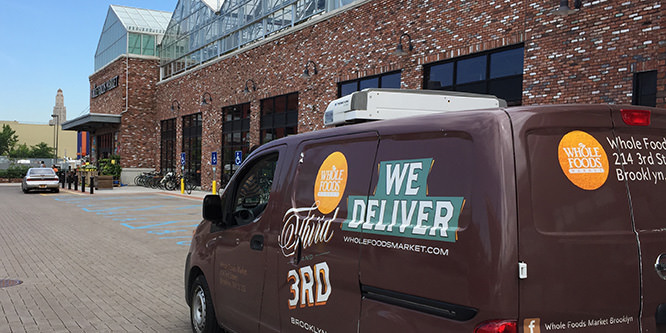
In today’s fast-paced world, meal delivery services have become increasingly popular, offering convenience at the click of a button. However, behind this trend lie hidden costs and implications that are often overlooked. In this article, we will explore the history of food delivery, the success of Uber Eats, the challenges faced by both restaurants and consumers, and the importance of fostering meaningful connections with our food through cooking and dining experiences.
The Evolution of Food Delivery: From Butchers to Apps

Food delivery is not a new concept, as it has been around for centuries. In the past, butchers delivered meat to wealthy customers, and milkmen made regular deliveries to households. However, it wasn’t until the invention of television in the 1950s that food delivery became crucial for restaurants to survive. The emergence of the internet and technological advancements led to the birth of online food delivery services like Worldwide Waiter in 1995, followed by Grubhub in 2004, and later, the arrival of industry giants such as DoorDash and Uber Eats.
The Surprising Success of Uber Eats: A Lockdown Boost
Even before the COVID-19 lockdowns, Uber Eats experienced immense success. With our culture’s increasing reliance on the internet, quick and easy access to anything we desire has become the norm. Uber Eats, along with other food delivery apps, perfectly aligns with this trend. During the first year of lockdowns, the number of restaurants signing up for Uber Eats skyrocketed, and the company’s annual revenue more than doubled. However, despite the impressive sales figures, Uber Eats continues to operate at a loss, banking on the strategy of outlasting competitors to become the ultimate delivery service.
The Paradox of Profit and Loss: The Business Model of Delivery Apps
While operating at a loss may seem counterintuitive, it is a common strategy for many tech startups. The idea is to gain a significant customer base by offering services at a loss, with the hope of becoming the dominant player in the market. Only then can prices be raised without much competition. However, this approach comes with challenges and puts pressure on the delivery service companies to remain afloat while retaining customers.
The Struggles Faced by Restaurants: The Necessary Evil of Uber Eats
For restaurants, Uber Eats has become a necessary evil. With the rise of meal delivery services, restaurants rely on the business they bring in through these apps to survive. However, they pay a substantial commission fee, up to 30% per order, which does not include the initial fee to join the platform. This commission, coupled with the need to use multiple delivery apps, has placed a significant burden on independent restaurants already struggling to stay afloat during the pandemic. The added cost of packaging waste exacerbates the problem, both financially and environmentally.
The Consumer’s Dilemma: The High Price of Convenience
While Uber Eats and similar apps promise convenience, the cost for consumers can be surprisingly high. Many have noticed the steep prices associated with meals ordered through these platforms. In some cases, ordering through a delivery app can increase the cost of a meal by 60% or more compared to ordering directly from the restaurant. Additional charges, such as delivery fees and service fees, further inflate the cost. These expenses often lead to dissatisfaction among consumers, as they realize they are paying a premium for the convenience they seek.
Dark Side of Convenience: The Dystopian Nightmare

As technology continues to advance, our society craves faster and easier access to everything. However, it is crucial to consider what we are willing to sacrifice for this illusion of convenience. While meal delivery services provide instant gratification, they remove the personal connection with our food and eliminate the experience of dining out. This dystopian version of convenience may not align with the values and desires of many consumers.
Rediscovering Food Connections: The Rise of Meal Kits and Local Produce
In response to the breakdown between what we eat and where it comes from, meal kit services have emerged as a solution. These services offer a connection to the source of our food, providing fresh, local ingredients that can be transformed into home-cooked meals. Connecting face-to-face with the people who grow our food has become a unique and cherished experience, allowing us to explore new flavors and support local communities. This reconnection with our food is vital in addressing health issues, food waste problems, and agricultural challenges.
The Value of Cooking and Dining Experiences: Beyond Convenience
Cooking and dining experiences offer more than just sustenance. Sharing a home-cooked meal with loved ones fosters meaningful connections and creates lasting memories. The effort and care put into preparing a meal make it all the more satisfying. Beyond the physical nourishment, mindful eating practices have been shown to improve digestion, enhance appreciation for food, and strengthen relationships. Family meals, in particular, have a positive impact on children’s development, improving communication skills, self-esteem, and overall well-being.
Uber Eats and Food Delivery Conclusion
While meal delivery services may offer convenience, it is essential to consider the hidden costs and long-term implications. We should not overlook the value of cooking, the connection to our food sources, and the experiences that come with dining out. By embracing mindful eating, supporting local producers, and investing time in cooking and shared meals, we can reclaim the joy and benefits that convenience alone cannot provide. Let us reflect on what truly matters and make conscious choices that nourish our bodies, relationships, and the planet.
It would also be beneficial for you to read our article analyzing the intricacies of tipping delivery drivers.
Key Takeaways
- Meal delivery services like Uber Eats offer convenience, but the hidden costs for restaurants and consumers can be significant, including high commission fees, increased meal prices, and packaging waste.
- Despite the success of food delivery apps, many companies, including Uber Eats, operate at a loss, relying on gaining a large customer base to dominate the market and eventually raise prices.
- The rise of meal kits and a focus on local produce offer an alternative solution, allowing for a connection to the source of food, supporting local communities, and addressing health, waste, and agricultural challenges.
- Cooking and dining experiences, whether at home or in restaurants, provide more than just convenience. They foster meaningful connections, promote mindful eating, and strengthen relationships, enhancing overall well-being.
